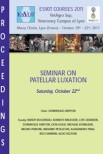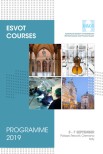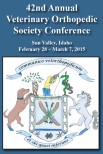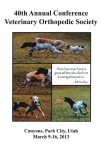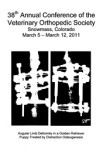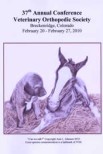Islandic horse. Male 17 days of age. Presented with deformity of the front limbs. The appearance of the front limbs was already abnormal after birth. During the first week the owner reported improvement, then worsening. Radiographs of the front limbs were taken. Dorsopalmar view centred on the right and left carpus. Radiographic findings and diagnosis
- There is bilateral moderate angular limb deformity with carpal angulation (valgus).
- The pivot point is at the level of the distal epiphysis of the radius, with angulation of approximately 17° left and 15° right.
- The carpal bones have normal shape and radioopacity.
- There is a marked uneven growth of the distal radius: the medial side of the of the radial growth plate outgrows the lateral side (arrows).
- There is bilateral and symmetrical irregular border of the mediodistal physis of the radius and mild irregular lateral border of the distal epiphysis (empty arrows).
- The radiographic diagnosis was moderate angular limb deformity, bilateral of the front limbs, mild asymmetrical with suspicious of physitis.
Radiographic examination Close up of the DP view of the left carpus, marker is lateral. Comments A surgical approach was elected. DP view of the carpi direct post surgery 9 weeks later the horse was presented for a re-check. DP view of both carpi 9 weeks post surgery, showing the almost complete resolution of the valgus deformity. Comments
- In the last radiographs, mild soft tissue swelling centred on the implant on the medial side (left more than right) was present.
- There was also mild patchy loss of bone opacity under the plate on the left side and around the distal screws on both sides.
- The same day, the implants were removed.
- The standard angular limb deformity radiographic series consists of 2 to 5 views. Together with the dorsopalmar view and the mediolateral (here not shown) view of each limb (centred on the carpus and including as much of the radius and metacarpus as possible),also a full-lenght frontal view of both carpi and metacarpi side-by-side (Nancy view) is recommended (in the present case shown only in the last post OP study). This view is particularly important because it employs a constant plane of reference and allows assessment of both angular and torsional deformities.
- The carpal radiometrics are reported to be often inaccurate. Sometimes the foal assume a wide variety of postures while being radiographed, especially if forcefully retrained.
- It may then be that the degree of carpal/tarsal angulation can vary and measurements from single radiographs may underestimate or overestimate the mean angulation.
- Among the most important etiologies leading to angular limb deformity, the most common are: Joint laxity, uneven distal radial growth, physitis, hypoplastic, dysplastic, fractured tarsal or carpal bones, tendons contractures.
- Possible therapies are conservative approach with cast or surgical therapy. Different surgical techniques have been described, as periosteeal stripping, transphyseal bridging and corrective wedge osteotomy/ostectomy.
